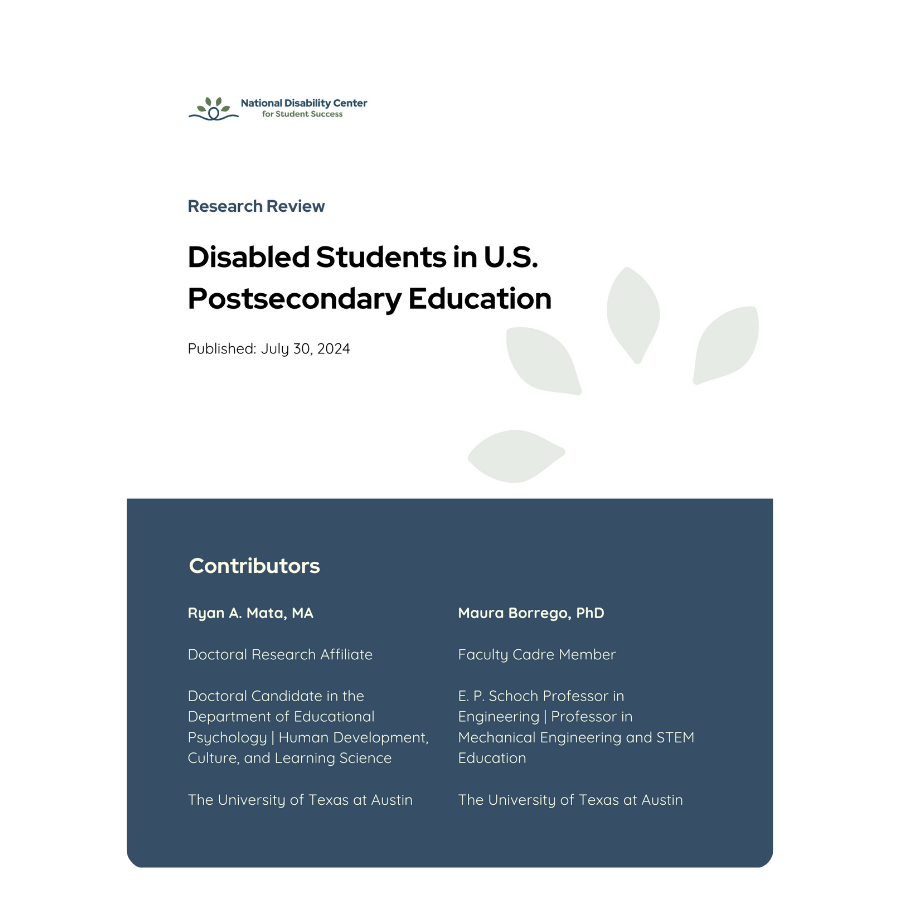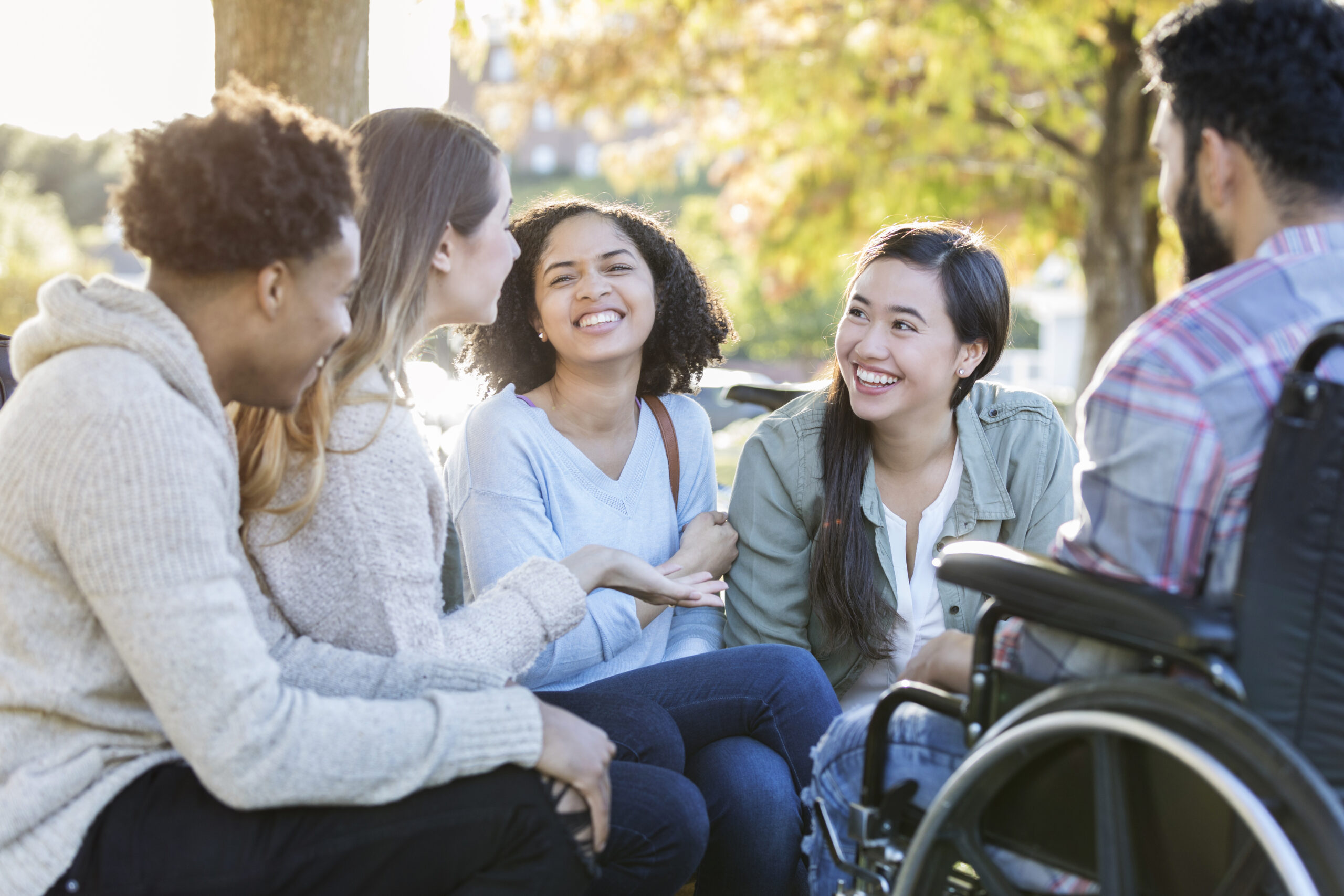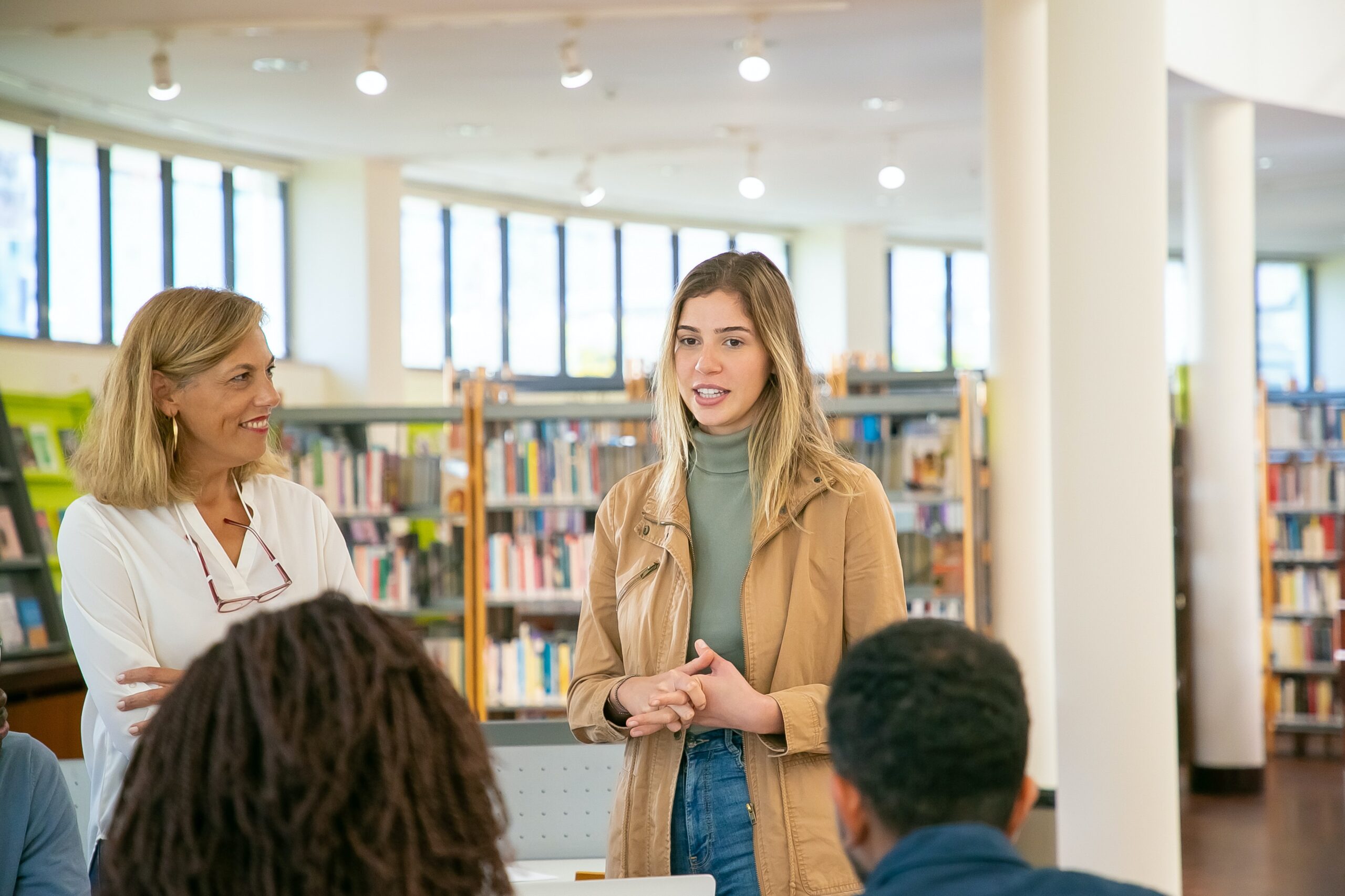Published: July 30, 2024
Rising Enrollment, Yet Achievement Gaps Persist
More disabled students than ever are enrolled in postsecondary education.
- Having made strides through federal legislation, enrollment has steadily grown to more than quadruple past rates.1,2,3,4
- Non-apparent disabilities such as mental health conditions and attention deficit disorders are skyrocketing categories.5
Yet their graduation and employment rates are lower.
- Students with disabilities graduated from college at lower rates than those without disabilities.5
- Those who did graduate were less likely to be employed full-time than peers without disabilities.5
The Undercount: A Lack of Disclosure and Awareness
The numbers don’t add up.
- As of 2019, there are reportedly more than three million disabled students across U.S. postsecondary education, making up nearly 21% of all students in higher education and about 20% of all four-year college students.6,7,8
Disabled Students in U.S Postsecondary Education Institutions
- However, the CDC estimates that one in four U.S. adults has at least one disability — an estimate that would equate to over 4 million disabled students.9
That CDC estimate means
4M
(more than the population of the entire city of Los Angeles)
Students aren’t disclosing their disabilities (or don’t know they have one).
- Disability disclosure happens in both formal and informal ways, whether they have registered for accommodations or not, such as coordinating their learning needs with instructors or TAs and talking with classmates and other peers on campus.
- Only about half of students with disabilities disclose to their institution’s disability services office.10
- For some postsecondary students, their disability isn’t identified until college — either with an official diagnosis or the realization their existing health or mental condition is a disability and qualifies for accommodations.
”Disabled students can benefit from additional support beyond legal compliance, including from
initiatives aiming to improve engagement and belonging and protect against dropout.18,23
There are hidden costs of disclosure.
- The bias against disabilities holds a lot of people back from disclosure, including discomfort sharing with peers due to fears of social stigmas or being met with disrespect.11
- Disabled students want to avoid embarrassment, being seen or treated differently, or simply don’t find disclosure necessary or relevant to their studies.12
Persistence and the Path to Graduation
A disabled student enrolls. Now what?
- Typical barriers to higher education include transitioning from secondary school, navigating campus, and registering for academic accommodations.4,19,20,21,22
- The good news: Census data reflects that between 2008 and 2021, degree achievement doubled from about 10% to 20% of all disabled adults aged 25-34.13
- However, persistence and program completion rates have only seen modest increases that routinely trail national averages and rates of non-disabled counterparts.4,14
Support resources can make a difference.
- Disabled students are more likely to stay in college after seeking and receiving campus support resources, including those universally available to all students and that do not require disability disclosure.15
- Some support is provided through special programs for disabled students, but most resources are a patchwork of accommodations for regular and typically inaccessible classroom experiences (and aren’t usually available for non-classroom experiences on campus).
- Few students use the same accommodations in college as they did in high school.16 Furthermore, the process for receiving accommodations is much different in college, and due to FERPA, parents cannot assist as they may have in secondary settings.
Tips and Strategies for Institutions
Contributors

Doctoral Research Affiliate
Doctoral Candidate in the Department of Educational Psychology | Human Development, Culture, and Learning Science
The University of Texas at Austin

Faculty Cadre Member
E. P. Schoch Professor in Engineering | Professor in Mechanical Engineering and STEM Education
The University of Texas at Austin
Recommended Resources
Recommended Citation
Mata, R.A. & Borrego, M. (2024). Disabled Students in U.S. Postsecondary Education. National Disability Center for Student Success, The University of Texas at Austin. Funded by IES Cooperative Agreement #R324C230008.
Cited References
- Americans with Disabilities Act of 1990, 42 USC § 12131-12134 (1990).
- Individuals with Disabilities Education Act of 2004, 20 USC § 1400 (2004).
- The Rehabilitation Act of 1973 [as amended through P. L. 114-95, enacted December 10, 2015], 29 USC § 794 (2014).
- Carroll, J. M., Pattison, E., Muller, C., & Sutton, A. (2020). Barriers to bachelor’s degree completion among college students with a disability. Sociological Perspectives, 63(5), 809-832.
- U.S. Government Accountability Office. Higher Education: Education Could Improve Information on Accommodations for Students with Disabilities. GAO-24-105614. (2024)
- U.S. Department of Education, National Center for Education Statistics. (2019a, 2023). Digest of education statistics, Table 311.10.
- U.S. Department of Education, National Center for Education Statistics, Beginning Postsecondary Students: 2012/2017 (BPS). (2019b). Bachelor’s degree attainment at first institution through June 2017 by Disability: has some type of disability 2012. [NCES DataLab].
- U.S. Department of Education, National Center for Education Statistics, National Postsecondary Student Aid Study: 2020 Undergraduate Students (NPSAS:UG). (2023). Disability: has some type of disability by NPSAS institution type (IPEDS sector). [NCES DataLab].
- Centers for Disease Control and Prevention. Disability and Health Data System (DHDS) [updated 2023 May; cited 2023 May 15].
- National Disability Center for Student Success (2024, June 4). Initial pilot of new accessibility measure yields key insights; National pilot begins in March.
- Smith, S. A., Woodhead, E., & Chin-Newman, C. (2021). Disclosing accommodation needs: exploring experiences of higher education students with disabilities. International Journal of Inclusive Education, 25(12), 1358–1374.
- National Disability Center for Student Success Campus Accessibility Measure Report (in prep, 2024).
- Houtenville, A., Bach, S., & Paul, S. (2023). Annual report on people with disabilities in America: 2023. Institute on Disability, University of New Hampshire.
- Newman, L., Wagner, M., Cameto, R., Knokey, A.-M., & Shaver, D. (2010). Comparisons across time of the outcomes of youth with disabilities up to 4 years after high school. National Center for Special Education Research 2010–3008.
- Newman, L. A., Madaus, J. W., Lalor, A. R., & Javitz, H. S. (2021). Effect of accessing supports on higher education persistence of students with disabilities. Journal of Diversity in Higher Education, 14(3), 353.
- Cawthon, S. W., Leppo, R., Ge, J. J., & Bond, M. (2015). Accommodations use patterns in high school and postsecondary settings for students who are d/Deaf or hard of hearing. American Annals of the Deaf, 160(1), 9–23.
- Cawthon, S., Mata, R.A., Lama, D., Alvarez, L.G. (2025, in press). The Current Status of Accessibility in U.S. Higher Education. The New Accessibility in Higher Education.
- Harper, S. R., Patton, L. D., & Wooden, O. S. (2009). Access and equity for African American students in higher education: A critical race historical analysis of policy efforts. The Journal of Higher Education, 80(4), 389–414.
- Goode, J. (2007). ‘Managing’ disability: Early experiences of university students with disabilities. Disability & Society, 22(1), 35-48.
- Grimes, S., Southgate, E., Scevak, J., & Buchanan, R. (2019a). Learning impacts reported by students living with learning challenges/disability. Studies in Higher Education, 46(6), 1146-1158.
- Matthews, N. (2009). Teaching the ‘invisible’ disabled students in the classroom: disclosure, inclusion and the social model of disability. Teaching in Higher Education, 14(3), 229-239.
- Timmerman, L. C., & Mulvihill, T. M. (2015). Accommodations in the college setting: The perspectives of students living with disabilities. Qualitative Report, 20(10).
- Leake, D. W., & Stodden, R. A. (2014). Higher education and disability: Past and future of underrepresented populations. Journal of Postsecondary Education and Disability, 27(4), 399-408.
Additional References
- Bureau of Labor Statistics. (2020). Persons with a disability: Labor force characteristics.
- Cole, E. V., & Cawthon, S. W. (2015). Self-disclosure decisions of university students with learning disabilities. Journal of Postsecondary Education and Disability, 28(2), 163–179.
- Dryer, R., Henning, M. A., Tyson, G. A., & Shaw, R. (2016). Academic achievement performance of university students with disability: Exploring the influence of non-academic factors. International Journal of Disability, Development and Education, 63(4), 419-430.
- Grimes, S., Southgate, E., Scevak, J., & Buchanan, R. (2019b). University student perspectives on institutional non-disclosure of disability and learning challenges: reasons for staying invisible. International Journal of Inclusive Education, 23(6), 639–655.
- Henderson, Cathy. (1992). College freshmen with disabilities. A statistical profile. Washington, DC: American Council on Education, Heath Resource Center.
- NCES (National Center for Education Statistics). 2019. Digest of education statistics, Table 311.10.
- Newman, L., Wagner, M., Knokey, A. M., Marder, C., Nagle, K., Shaver, D., & Wei, X. (2011). The post-high school outcomes of young adults with disabilities up to 8 years after high school: A report from the National Longitudinal Transition Study-2 (NLTS2). National Center for Special Education Research 2011-3005.



